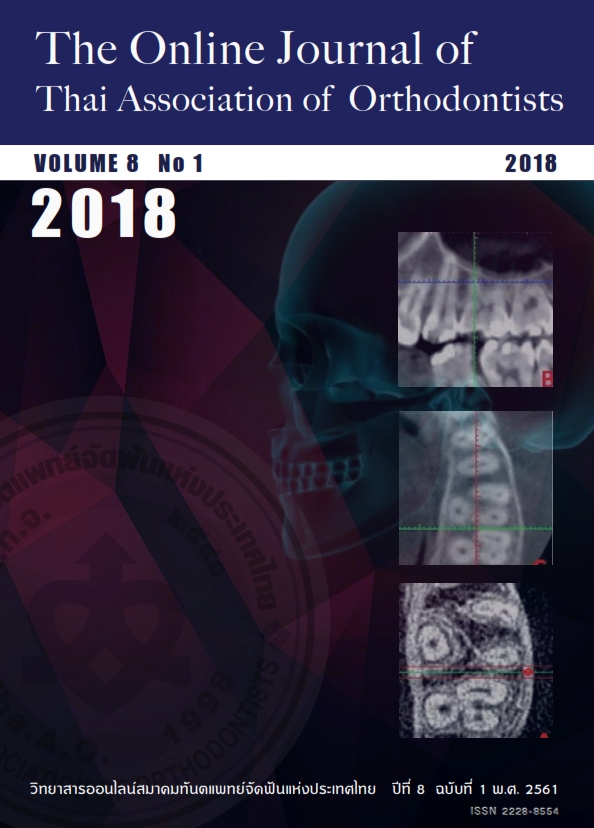Comparison of Infrazygomatic Crest Thicknesses between Thai Patients with Class I and Class II Skeletal Pattern Using Cone Beam Computed Tomography
Main Article Content
Abstract
Objectives: This study was aimed to evaluate and compare three-dimensional anatomical structures of infrazygomatic (IZ) crest site in Thai patients with Class I and Class II skeletal pattern.
Materials and Methods: 48 cone beam computed tomographic (CBCT) images of IZ crest sites from 24 Thai orthodontic patients (12 with Class I, and 12 with Class II skeletal pattern) were measured. Buccal cortical bone thickness between the maxillary first and second molars, buccal plate thickness at distobuccal root of the maxillary first molar and mesiobuccal root of the maxillary second molar in 4 vertical levels (5.0, 6.0, 7.0 and 8.0 mm from buccal cementoenamel junction of the maxillary first molar) were measured. The IZ crest thickness were measured by postulating that the miniscrew implant (MI) would be inserted using a combination of 4 different vertical levels and 4 different directions (55°, 60°, 65° and 70°) to the maxillary molar occlusal plane as clinical guideline.
Results: In Class I skeletal pattern, the buccal cortical bone thickness ranged from 1.18 + 0.09 to 1.31 + 0.76 mm, and in Class II ranged from 1.21 + 0.33 to 1.37 + 0.38 mm. In Class I skeletal pattern group, buccal plate thickness ranged from 2.91 + 0.74 to 3.82 + 1.25 mm, and in Class II ranged from 2.98 + 1.20 to 4.18 + 1.40 mm. In Class I skeletal pattern group, IZ crest thickness ranged from 5.27 + 2.63 to 8.77 + 2.85 mm and in Class II ranged from 4.94 + 0.41 to 7.77 + 0.47 mm.
Conclusions: There was no statistically significant difference for all measured IZ variables between Class I and Class II skeletal patterns (P>0.05).
Article Details

This work is licensed under a Creative Commons Attribution-NonCommercial-NoDerivatives 4.0 International License.


